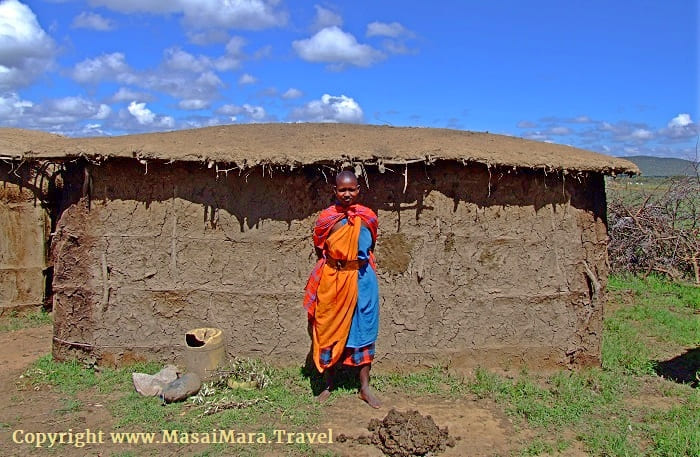

Arguably the most iconic tribal group in all of Africa, the Maasai, who populate vast areas of Northern areas of Tanzania are the dominant ethnic group surrounding the Serengeti. This nomadic, warrior tribe which once held vast swathes of pre colonial Tanzania, still retain many of their traditions as they live largely untouched by modern day civilization, in areas surrounding Serengeti. So why visit a Maasai village and what do you get to see? This one hour visit to a Maasai village is a chance to interact with the Maasai and get a glimpse into their culture, unique way of life and see first hand some of their customs and practices.
The Maasai village visit is typically an excursion included into a longer multi day Serengeti safari tour, and couple of hours are set apart for this brief interactive visit to the village, which usually happens to be on the fringes of the main Serengeti park boundaries. Many tourists wish to know how much it costs to visit a Maasai village. The price for a village visit which includes a contribution towards the village in form of a fee, as well as return road transfers from your lodge or camp in Serengeti to the village, varies between USD 25 to 50 per person. The price is often lower when you are on a road safari with your own Driver-Guide who will pay the fee upon entry. The higher fee of USD 50 per person often applies when you have flown in on a package safari and it is then the Camp which will charge you the fee for the village visit and the price in this case can vary again from USD 30 to USD 50 per person based on which camp you are staying at and which village they take you to visit. It should be noted that once at the village, you may be expected to buy some curio or souvenier from the villagers, though this is not mandatory having paid an entry fee. Nonetheless, be prepared for determined efforts from some of the Maasai villagers to try and sell you what are inexpensive hand made craft items. For some this can be an unpleasant part of the excursion though in totality we feel this is a minor negative that has become a part of the experience and the positive part of the visit outweighs the negative.

The Maasai are known for their many unique cultural practices and traditions. Some of these originate from their nomadic way of life.

So what is the name of a Maasai village ? Well, the Maasai live in structures known as 'Manyatta', which are low height dwellings, essentially huts, made of mud, cow dung and wood, with a single entrance and minimal side windows. Clusters of these manyatta huts, which form a homestead or village, are known as a Maasai ''Boma''. Several Bomas can also join together to make a larger village. The individual huts themselves, the manyattas, have windows so small that it can be very dark inside a manyatta even on a sunny day. The image above shows a typical Manyatta hut with a Maasai woman standing in from of the rear of the manyatta. The image below shows the inside of a Manyatta. In the photo you can see the earthen stove and firewood which will be used for cooking a meal. There is no piped water, electricity or Gas. We should point out that these specific manyattas or villages are right in the interior of the Seronera area, close to the park. While there is power and piped water in the reserve itself and in the more developed part of Mwanza Town, the very traditional Maasai villages still exist in this manner.


Morans are the warriors of the Maasai tribe and are initiated into their status by rites of passage which are given much importance. The image above shows the Morans displaying their jumping skills. Tourists who visit the Maasai village will often get a chance to find out how high they can jump compared to the Maasai morans. You can read up more facts and information on the Maasai Tribe here.
